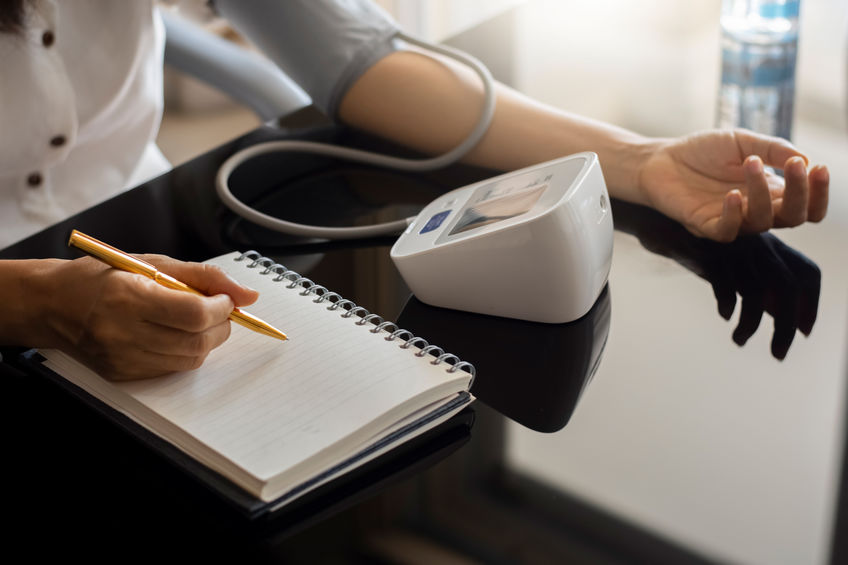
People most commonly associate the month of February with Valentine’s Day, but did you know that all of those heart decorations can double for another celebration too? That’s because February is also American Heart Month!
Heart disease has long been and still remains the leading cause of death across all genders, races, and ethnicities in the United States. Heart problems are not always overtly serious or life-threatening when they begin though. In fact, one of the most common heart conditions in the country usually doesn’t produce any symptoms at all—high blood pressure.
High blood pressure (or hypertension) that goes untreated often turns into more serious forms of heart disease. If you have high blood pressure or are even predisposed to it, at-home monitoring can be a crucial preventative step for maintaining your heart health. Let’s go over everything you need to know about accurately measuring you blood pressure at home!
Why should I monitor my blood pressure at home?
If you keep up with your regular doctor’s appointments, you may be wondering why you need to do additional blood pressure measuring at home. After all, if your doctor wanted to monitor your numbers more closely, they would just have you come in more often, right? Not necessarily.
Measuring your blood pressure more often will result in a more accurate overall reading, as you’re able to work out an average with a greater amount of data. Blood pressure readings also tend to be more accurate when you’re in a comfortable place. Many people feel anxiety or stress when they visit the doctor, which can make their blood pressure higher than it normally is.
Keeping track of blood pressure on your own helps keep hypertension under control, diagnose you early if you’re predisposed, and can prevent a more serious condition from developing. If it goes unchecked, hypertension can lead to heart attack, stroke, aneurysm, cognitive problems, and other life-threatening issues.
How can I measure my blood pressure accurately?
There are many easy-to-use tools available for measuring your blood pressure by yourself at home. After purchasing your monitoring equipment, it’s a good idea to check it against your doctor’s equipment to confirm accuracy. Once you’ve checked your blood pressure monitor, there are certain conditions you must meet to get an accurate reading at home.
Before Taking Your Blood Pressure:
Do not take any medications that can elevate blood pressure (decongestants, NSAIDs) before doing your reading. You also should not eat, drink alcohol or caffeine, or smoke for at least 30 minutes before measuring. Empty your bladder and relax for a few minutes before taking your blood pressure. It is best to relax while sitting upright in a chair with your back supported.
While Taking Your Blood Pressure:
Sit up straight in your chair, with your feet flat on the floor, and place your arm on a table with your palm facing upwards. You should try to have your arm level with your chest. Fit the blood pressure cuff around your bare upper arm, just above the elbow. The fit should be snug, but not too tight. Refrain from talking during your reading. Once you’ve taken your blood pressure, wait another two minutes and then take it again. Log both. If you’re not sure if you’re taking your blood pressure correctly, check out our quick demonstration video on YouTube!
During monitoring periods, it is best to take your blood pressure twice a day at the same times (once in the morning and once in the evening). This will help ensure your readings are as accurate as possible. Also keep in mind that blood pressure tends to be highest early in the morning, so you should not measure immediately after waking up.
What should I do if my blood pressure is high?
It is important to know what is considered high blood pressure and what steps to take if your readings fall into that category. “Normal” blood pressure, according to the American Heart Association, is considered any reading less than 120/80 mm Hg. If your blood pressure is between 120-129/80 mm Hg, it is considered “elevated”.
From there, there are three stages of hypertension. Hypertension Stage 1 is when your reading falls in the range of 130-139/80-90 mm Hg. Hypertension Stage 2 is 140+/90+ mm Hg. If your blood pressure is higher than 180/120 mm Hg, this is considered hypertensive crisis and requires medical attention. If your reading exceeds these numbers, wait a few minutes and then remeasure to confirm accuracy before seeking care.
For individuals who consistently have blood pressure readings in the elevated, Stage 1, or Stage 2 categories, you should consult with your doctor to confirm hypertension. Depending on how high your blood pressure is, they will likely recommend lifestyle changes and may prescribe medication to help lower it as well.
You can find everything you need to monitor your blood pressure at home at BEK Medical online and in-store!
We carry a wide range of different diagnostic medical supplies that are affordable and easy to use in the comfort of your own home. Choose from our selection of sphygmomanometers, digital wrist monitors, upper arm digital monitors, and complete blood pressure self-monitoring kits to manage your high blood pressure and protect your heart health.
Get the medical supplies you need online today or contact our specialists to order!
